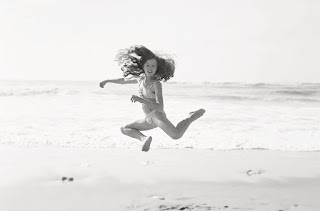Looking Back Moving Forward
Nestled in the foothills of the Blue Ridge Mountains of North Carolina, twenty minutes east of Asheville, from 1933 to 1956 stood Black Mountain College. Over a short period of 23 years, this private institution revolutionized arts education and attracted some of the most influential artists and teachers who would eventually transform postwar New York city into the center of the art world for the remaining of the century. Faculty members included Josef Albers, John Cage, Willem and Elaine de Kooning, Merce Cunningham and Jacob Lawrence to name a few. Their students, such as Robert Rauschenberg, Joseph Fiore, John Chamberlain, Kenneth Noland and many others took over their legacy and became celebrated artists in their own rights.
The college was
born out of a desire to create a new type of art school that would promote a philosophy based on John
Dewey’s principles of progressive education. Dewey
rejected
the idea that education should be based on memorizing and describing an
intangible reality. His approach to education was founded on pragmatism,
questioning and problem solving. The college’s founder, John Rice applied Dewey’s
philosophy to the learning and teaching of a variety of artistic disciplines. The educational system he implemented could be described as a
square, as in a town square, an open space where a dialogue among teachers and students could take place. Such a
structure meant that educators were independent and truly involved in the
shaping of the curriculum as well as responsible for the results obtained. Rice’s philosophy was very different from the more autocratic educative structure commonly
used in the classrooms today and which reflects a system shaped more like a
pyramid with concepts and theories trickled from the top. A system that could arguably be accused of disempowering educators and students alike. At Black Mountain College the
emphasis was placed on the practicalities of learning and doing.
Merce Cunningham who taught dance at Black Mountain College was a choreographer and not so much a teacher, whereas I am foremost a teacher and only sometimes a choreographer. Cunningham based his work on chance and rejection of classical theories. So, how do I reconcile such notions with my goals which is to pass on knowledge of theories to my students? I thought long and hard at what looked like an impasse and realized that my goal like Cunningham’s was the result. His goal was to find pragmatic and unconventional solutions to create new pieces of choreography and my goal is to find pragmatic and sometimes unconventional solutions to teach classical theories of ballet to my students. Indeed, in both cases what matters is the result. As a choreographer there is no point in repeating what already exists and as a teacher, we must always think of new ways to teach more efficiently. That is the challenge we face as educators and that is what makes our work interesting. Each new day in the studio should be a discovery for students and teachers alike. The process is the thing and the outcome only reveals how much imagination and innovation we put into it.
By observing what
accomplished artists had achieved decades ago at Black Mountain College, I was
reminded that creativity is the essence of success and also that creativity is
not a god-sent virtue, but a compendium of observation, knowledge, work and
discipline. Looking back at what is now a chapter in the history of dance also helped me recognize that the past and the present are inseparable parts of a perpetual movement.



Thanks for a really interesting post, so many great educators what happened to the college?
ReplyDelete